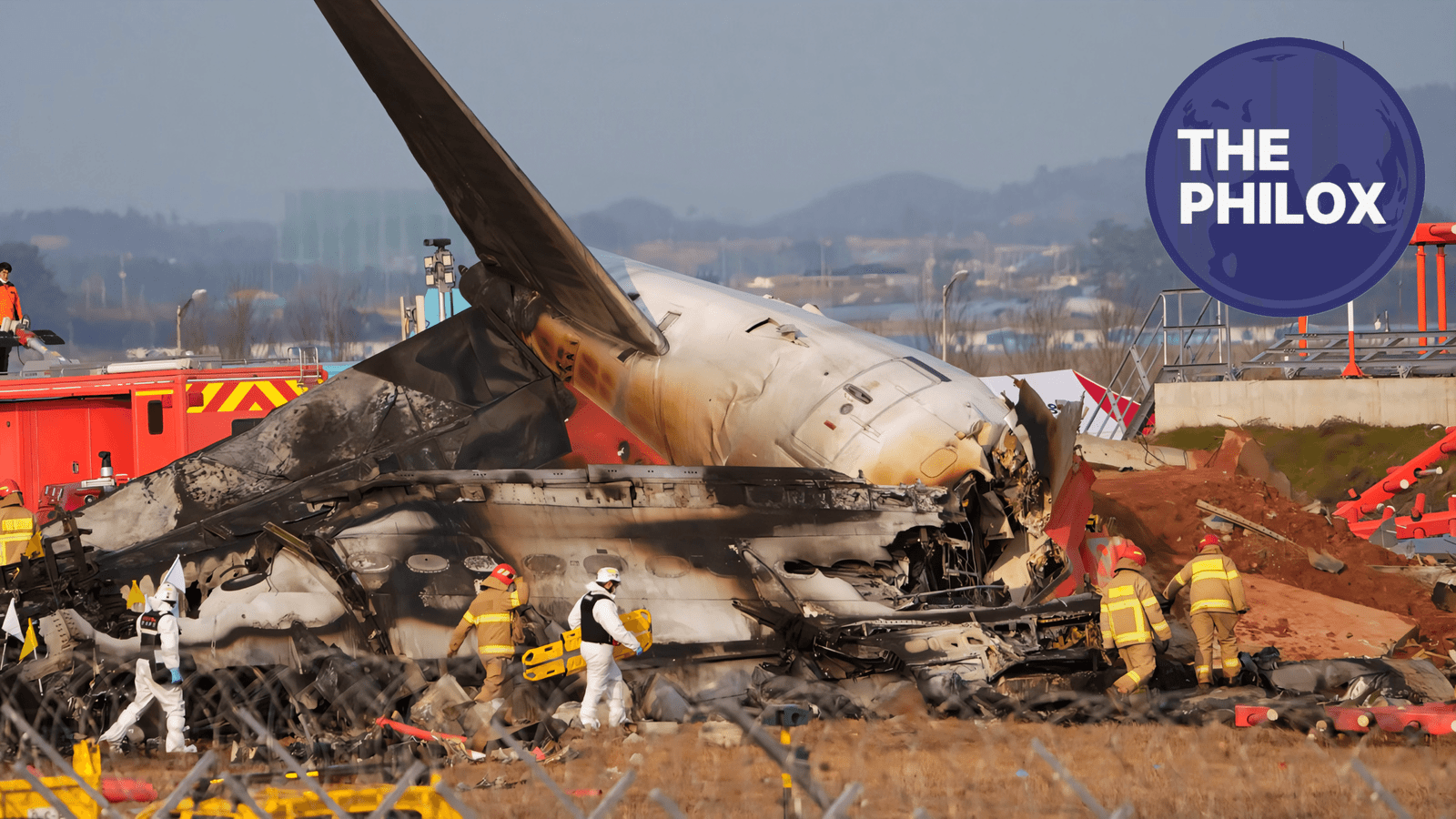Air travel is generally considered one of the safest means of transport. However, recent air crashes have thrown up quite a few questions about safety protocols,
latest technologies employed, human factors, and more importantly, oversight responsibilities of the regulating agencies that broach such concerns.
Every time an accident takes place, valuable lessons can always be learnt to better the safety mechanism in aviation and avoid repetition.
It discusses in detail some of the more significant air incidents, explaining what caused them and what followed from them, among much else that can be derived from them in terms of safety in aviation.
It further examines how the advancing technology and regulatory bodies provide safety in air travel.
Major Air Crashes and Incidents: A Deeper Analysis
Jeju Air Flight 2216 Crash in South Korea
On 29 December 2024, Jeju Air Flight 2216, a Boeing 737-800, crashed in attempting an emergency landing at Muan International Airport in South Korea.
The bird-strike led to a dual engine failure leaving the pilots with hardly any options, and so, the aircraft skidded off the runway into a concrete embankment where 179 out of the 181 passengers and crew lost their lives.
The crash investigations have pointed out that the failure of the landing gear had aggravated the accidents when the crew was compelled to attempt for a belly landing.
However, it has also been criticized that there was a rigid embankment on one side of the runway’s far end, which augmented the impact force and diminished the chances of survival.
In this aspect, the incident once again serves as a reminder of the devastation caused by bird strikes and the requirement for the safety infrastructure in runways.
DHC-3 Turbine Otter Crash in Washington, USA
A DHC-3 Turbine Otter floatplane crashed on September 4, 2022, in Mutiny Bay near Whidbey Island, Washington. The aircraft flying from Friday Harbor to Renton operated by West Isle Air had all ten on board die upon crashing.
The NTSB subsequently attributed the cause of the crash to a critical flight control failure. In other words, that means the aircraft had lost control due to the absence of a critical lock that stabilizes the aircraft in pitch.
This incident once again reminds us how important maintenance checks and pre-flight inspections are before takeoff so that all such critical components can be ensured to be working properly.
Alaska Airlines Flight 1282 Incident
On January 2024, Alaska Airlines Flight 1282 experienced an in-flight emergency where a door plug blew out mid-air. It is terrible because it eventually turned fatal. It brought home the fact that there must be proper maintenance and inspection.
The manufacturing or maintenance failure of door plug blown out in mid-air was a question of oversight procedures in place.
This incident highlights the quality control and supervision required to keep aircraft parts in good condition, not only engineered to withstand extreme conditions but also well maintained.
Haneda Airport Runway Collision in Japan
In 2024, a Japan Airlines aircraft crash landed on the runway with a Coast Guard aircraft at Tokyo’s Haneda Airport. No loss of life was involved but raised concerns over ground control communication and how airport operations were being handled.
The aviation experts accuse it of miscommunication between the air traffic controllers and the crews.
Such a case has shown that coordination and situational awareness are therefore necessary to stop such ground collision incidents, which can lead to fatal cases, just like the in-flight crashes.
New Zealand LATAM Airlines Flight 800 Incident
LATAM Airlines Flight 800 hit extreme turbulence flying over New Zealand in 2024, which left many people on board hurt.
Turbulence injuries account for the majority of aviation cases, and such incidents are really unpredictable, therefore, always require monitoring of the weather and being prepared.
This accident has highlighted the importance of passenger safety, which includes wearing seatbelts at all times while seated and further developing the detection of turbulence technology.
It also questions the effect of climate change on aviation as a result of increasing atmospheric instability that may increase turbulence encounters.
Jubba Airways Crash in Somalia
In 2022, a Jubba Airways aircraft overturned during landing in Somalia. While details about the accident are scarce, it does raise questions about the sa
fety of aviation in areas with less strict regulatory oversight.
Maybe, poor infrastructure, loss of uniformity in maintenance, and perhaps even some regulatory loopholes might have added to this disaster.
This accident only emphasizes the international calling for standardized conditions in aviation safety, which, when allied with more regulatory oversight across the developing aviations, will enhance that responsibility.
Underlying Causes of Air Crashes
Aviation mishaps usually are not brought about by one isolated condition, but could instead have several; these include mechanical failures and human mistakes, environmental conditions, and regulatory failure. Some of the significant contributing factors to these recent mishaps are as follows:
1. Bird Strikes
Bird strikes are one of the well-reported hazards in the world of aviation. The crash of Jeju Air Flight 2216 shows exactly what can go drastically wrong in case the bird strikes compromise more than one engine.
Despite setting up various strategies to deter birds at airports, further research and technological advancement could be required in order to diminish such a risk.
2. Mechanical Failure
Crashing of DHC-3 Turbine Otter proves how maintenance of proper aircraft is a good thing to keep.
Though even a very tiny missing component will lead towards cataclysmic failure. This only highlights the importance of correct inspection and the Preventive maintenance program.
3. Human Factors and Communication errors
The collision at Haneda Airport’s runway shows exactly how miscommunication between pilots, the ground crew, and air traffic controllers can prove dangerous.
Such mishaps both on ground and air levels can be avoided effectively by having coordination and adhering to proper protocols.
4. Weather Conditions Challenges
The LATAM Airlines turbulence incident reveals the uncertainty of the weather and the fact that it holds a significant power to affect air travels.
The pilots are trained to fly through it, but still further enhancement of forecasting and onboard technology will continue to reduce its risks.
5. Regulatory and Infrastructure Deficiencies
The Jubba Airways crash shows how poor infrastructure, along with weak regulatory oversight, leads to disasters in aviation. It is also important to keep the international safety standards in check at places where the aviation sector is developing.
Technological Developments and Associated Risks
Tremendous improvement has been seen by the aviation industry in terms of safety through technological advancements.
Automated flight systems along with advanced avionics and predictive maintenance tools have minimized the error of humans and mechanical failure. However, with such inventions come new challenges too:
1. Automation Dependency: For instance, pilots must maintain manual flying skills in case of system failures. Overreliance on automation can lead to skill degradation.
2. Manufacturing and Maintenance Supervision: In the Alaska Airlines Flight 1282, it was about the integrity of aircraft structural parts.
3. Cybersecurity Threats: The whole system in aviation is going digital; that brings another category of threats to cybersecurity breaches and hacking incidents.
Regulatory Agencies Role in Improving Aviation Safety
Some of the agencies that help in maintaining safety standards in the aviation industry are the Federal Aviation Administration (FAA), European Union Aviation Safety Agency (EASA), and International Civil Aviation Organization (ICAO).
After the recent mishaps, the above agencies have been working towards the following points:
1. Strict Safety: Maintenance and inspection protocols are developed to prevent mechanical failure.
2. Revision of Operational Procedure: Bird-strike preventive protocols and emergency response procedure, ground control-communication procedure.
Through continuous training, pilots and flight crews and air traffic controllers are assured to handle emergency situations on board.
Although such cases are on record, air travel remains the safest mode of transport with new technologies, better training, and improved regulatory practices.
Still, every accident reminds those who view it a reality of the dangers of flying, always lurking but minimized.
The industry must be forward-thinking about:
- The upgrading from past accidents to improve the safety procedure
- Acquisition of newer technologies for stronger resistance to adverse weather conditions and the robustness of aircraft.
- Developing the review process of regulation to undertake international safety standards
- Continuous professional training of employees so that self-confidence can be built in facing such eventualities
The safety culture along with continuous improvement will help the aviation industry to continue with its accident free record so that travelling public will continue to have confidence in air travel.
Stay Connected and Share Your Stories
For all those inspired by stories of resilience and ambition, follow us on X/Twitter and on Instagram . For those with untold stories that you would love to share, please send them to contact@thephilox.com









